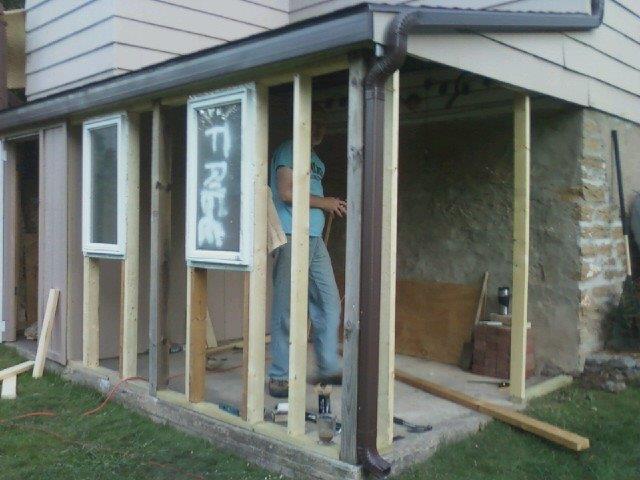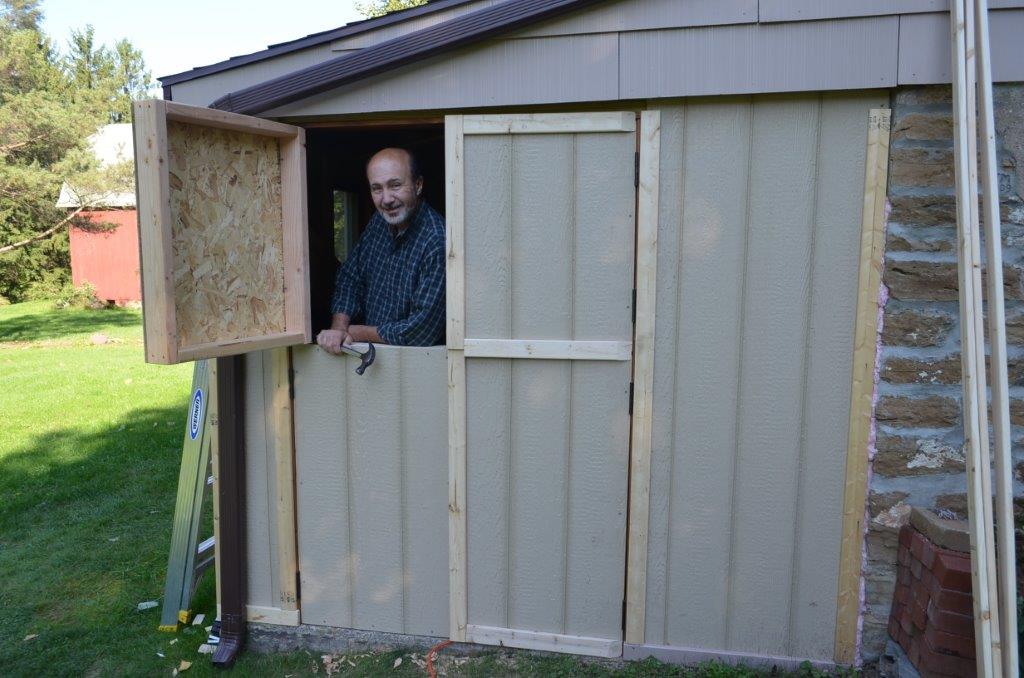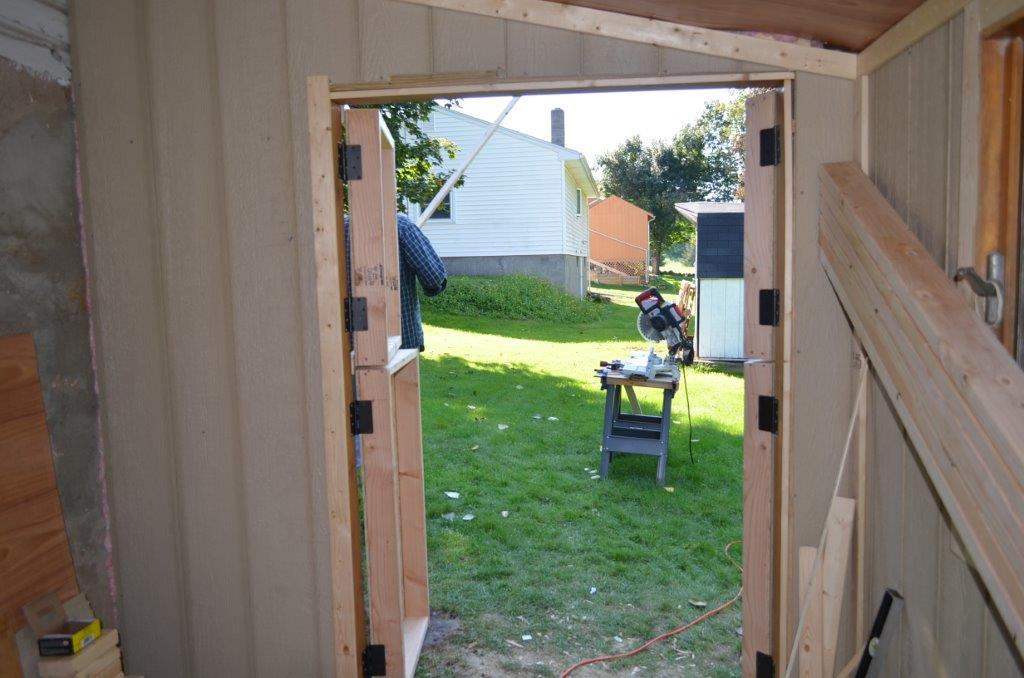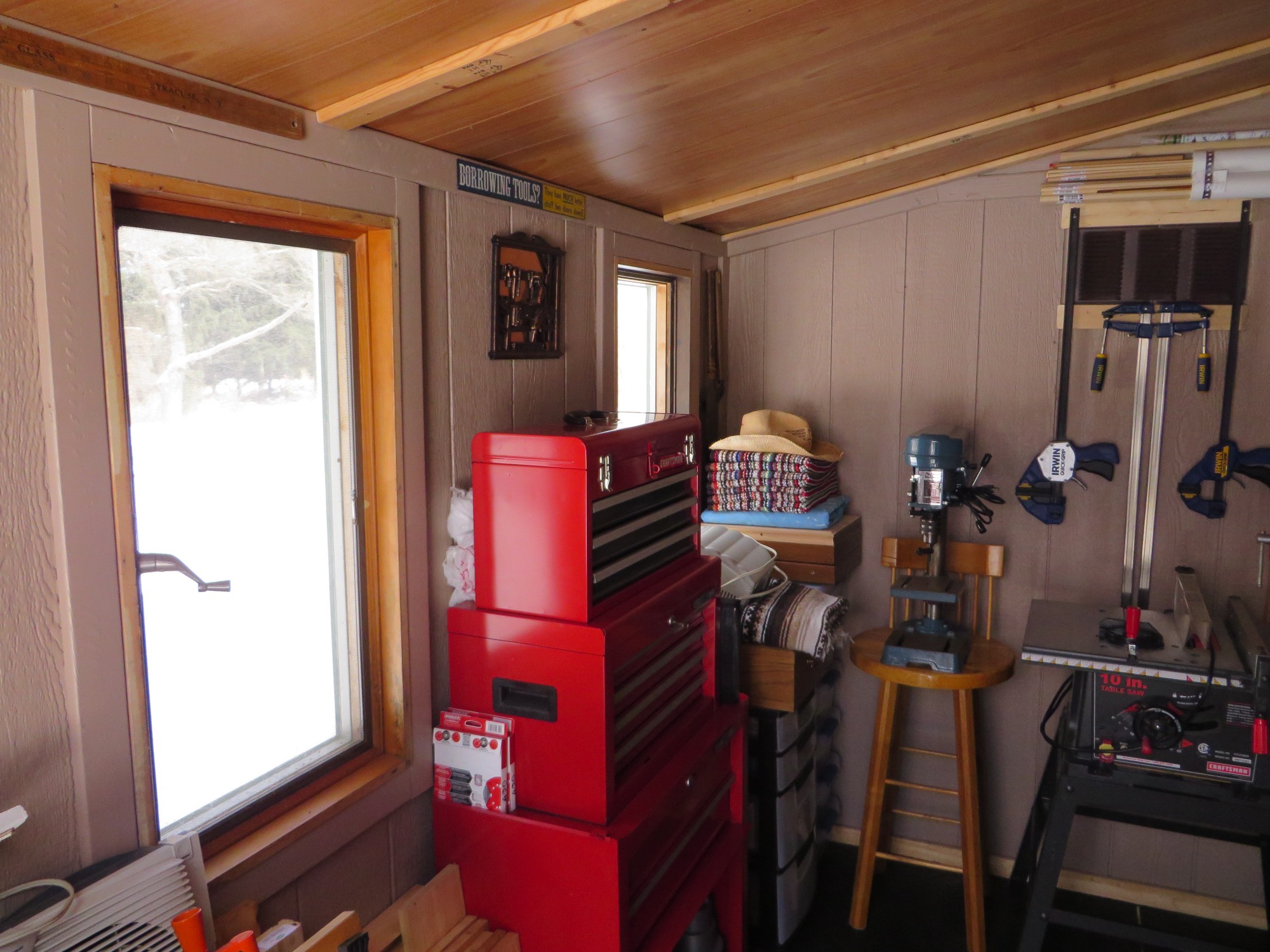First, the best perspective…
So he built the house and finished it; and he covered the house with beams and planks of cedar. – 1 Kings 6:9
About six weeks ago I posted about a project Dee and I had been working on for a couple of years. See ‘Back Yard Project: From Play Set to Potting Shed’ dated February 12, which can be accessed by clicking on the title found further down in the column on the right.
Today I thought I would share about my own work place, which was
a real need. Over the years I had acquired a rather large selection of power and hand tools, many materials and supplies, hardware, and
a growing collection of projects. The problem is that everything was stored and tucked away all over the house – the basement, in closets, the pantry, and anywhere else I could find a little extra space. I also needed a place where I could work on the projects without creating
a big mess. Dee has always been patient whenever I used the hallway or spare room for an improvised workshop, especially when it meant an improvement of some sort around the house. But – a dedicated place was much to be preferred…
The questions were where and how? The basement would not work because of limited space and no natural light. Adding on a separate room or building a free-standing workshop was cost-prohibitive. Then – the idea suddenly struck! We actually had some little-used space off the back of the house – an open area on a cement slab that was much like a patio, but with a roof. The concept began to develop, eventually leading to: From Wasted Space to Workshop Place!
Here’s how the project came to pass…

The back patio as it appeared in 1991 – Why is a gas can on the roof?
Click on Photos to Enlarge
First, the framework and windows. Notice the word ‘FREE’ on the right side window. Yes, these were found on the side of the road and they fit this project perfectly. FREE is always good!
Once the framing was complete, the siding was put in place – I used the same type of material that was used on Dee’s potting shed. Next up was insulation, then the interior walls, followed by caulking, and finish work. The next stage was to build and properly align the double french style doors, which I thought added a practical touch while also enhancing the appearance. My friend Rick, who lives two doors down provided the technical help and I was quite pleased with the results.
Once the outside was effectively sealed, it was time to turn the inside into usable workshop space. The first step was to install wall-to-wall half-inch thick rubber matting on the floor, which provided a finished appearance, but also created a more comfortable area on which to stand for longer stretches. I used paneling for the ceiling and then painted the inside using the same color as the outside, which used up the rest of the gallon with no waste!
Of course, what workshop would be complete without a suitable workbench? This one is nine feet long, twenty-five inches deep, and the height is perfect for me – fourty-one inches. In addition to the bench, there is a storage shelf for various power tools and plenty of space underneath for materials.
The opposite wall has the large chest for hand tools and my storage boxes for tools that are rarely used, such as electrical, plumbing, and masonry. Don’t let me fool you – I really have very little skill in any of these trades!
The shop is set up with light and electric on a power strip for safety. Also, if I need to work on something during cold weather, a small space heater warms things up to a tolerable temperature in just a
few minutes.
The one drawback is the limited number of square feet for actually working on projects larger than what can be done on the workbench. The shop has plenty of room for storage of tools and materials, but it’s only about 72 square feet. The solution? I actually do larger projects outside. Anything that requires the table saw, miter saw, routing, extensive sanding, staining, or other work where space is needed, is simply done out in the yard. The lighting is perfect and clean-up is simplified.
Cost for the project was reasonable, though I did not keep track of expenses. With the cement slab, roof, and one wall already in place, along with electric and lighting, the overall expenditures were quite small. The key to completing projects like the workshop or potting shed is to use what’s already on hand. The results include practical value, cost savings, and complete satisfaction!
So there you have it! The project was completed last November – a small and almost useless space turned into something of practical value. Now that spring is here, there are many projects that need
my attention and the new workshop will help me get them done.
I will never claim to have the knowledge or skill of Norm Abrams and this is certainly not the New Yankee Workshop. However, perhaps I’ll simply name it…
The Workshop on the Ridge
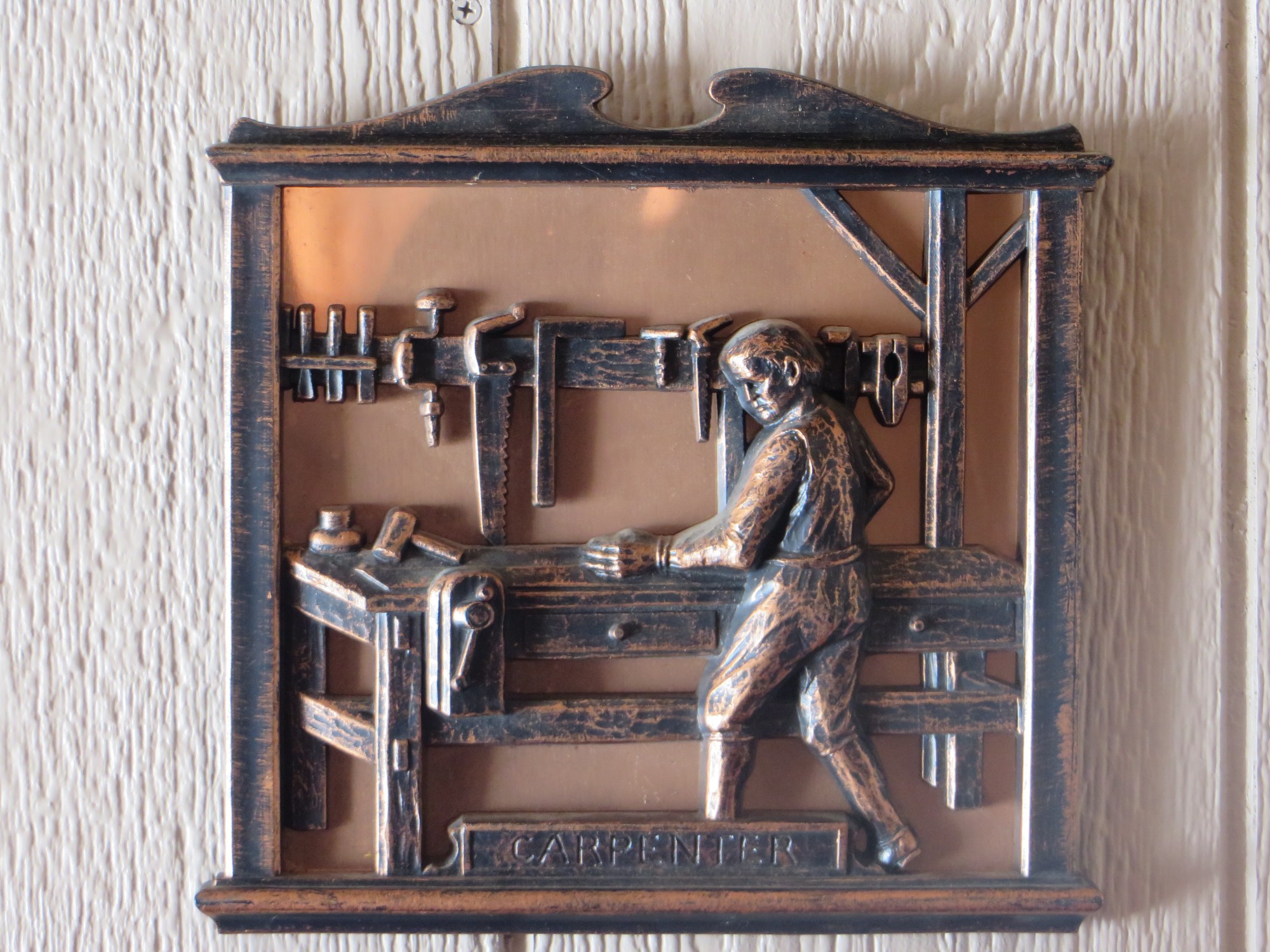

© Jeffery J. Michaels / Plain English Publications 2015
(Quotations allowed with attribution to this blog)

